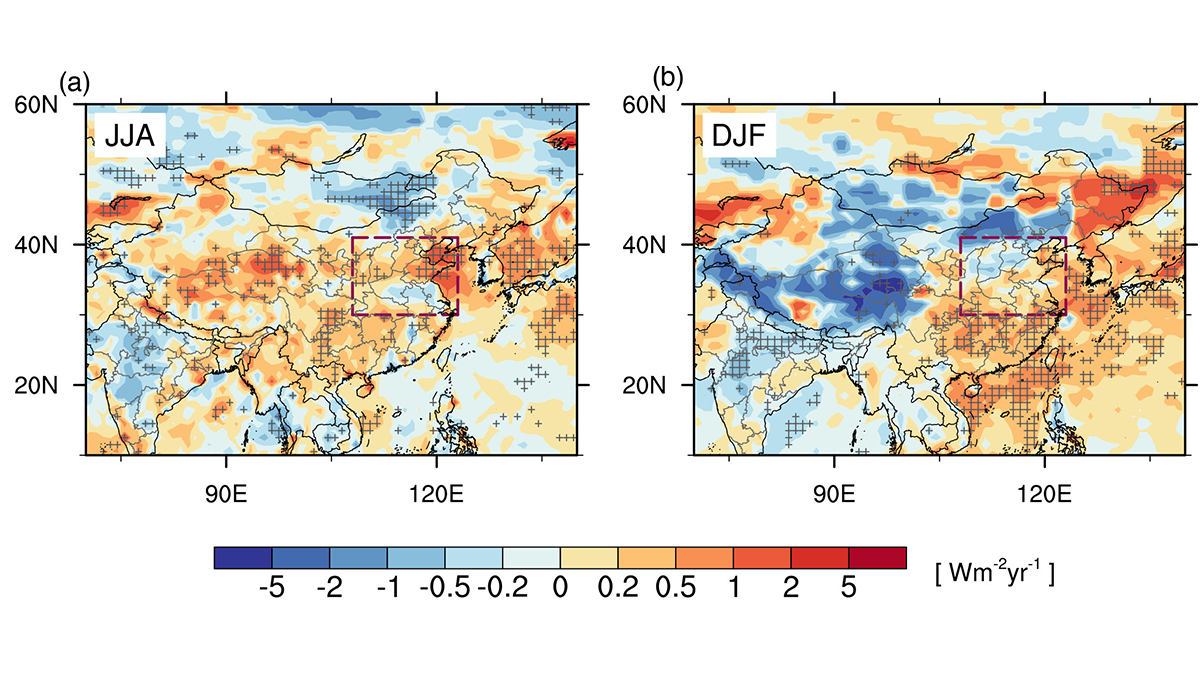Editors’ Highlights are summaries of recent papers by AGU’s journal editors.
Source: Journal of Geophysical Research: Atmospheres
Aerosols play an important role in the Earth’s climate system. Although many studies have assessed the response of aerosol loading to emission reduction in Northern China, they were conducted mainly from an environmental benefit perspective.
Liu et al. [2023] investigate the seasonal features of aerosol responses to the recent strict emission control policy over Northern China during 2013-2019 and found a distinct seasonality for different aerosol properties. Unlike a more significant reduction of PM2.5 concentrations in winter, aerosol optical depth (AOD) declines much faster in summer than in winter by a factor of 2.0-2.9. Moreover, the reduction in AOD increased aerosol radiative effect by 1.2 and 5.7 Wm-2 under all-sky and clear-sky conditions, respectively. Overall, the environmental and climatic responses of aerosols to emission control exhibit distinctively different seasonality.
Citation: Liu, Y., Wang, M., Yue, M., & Qian, Y. (2023). Distinct seasonality in aerosol responses to emission control over Northern China. Journal of Geophysical Research: Atmospheres, 128, e2022JD038377. https://doi.org/10.1029/2022JD038377
—Ping Yang, Editor, JGR: Atmospheres

